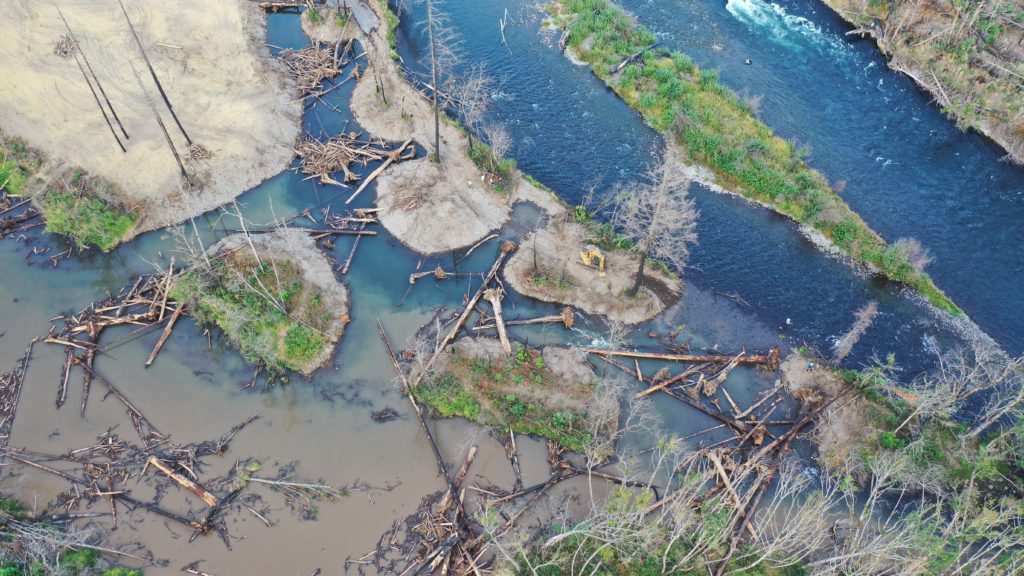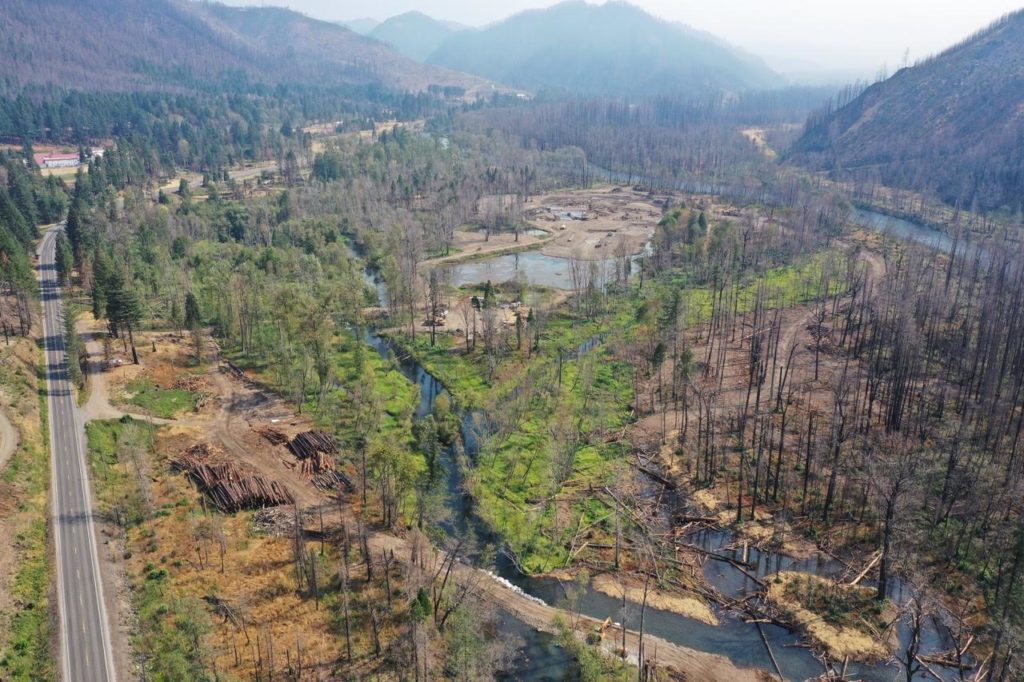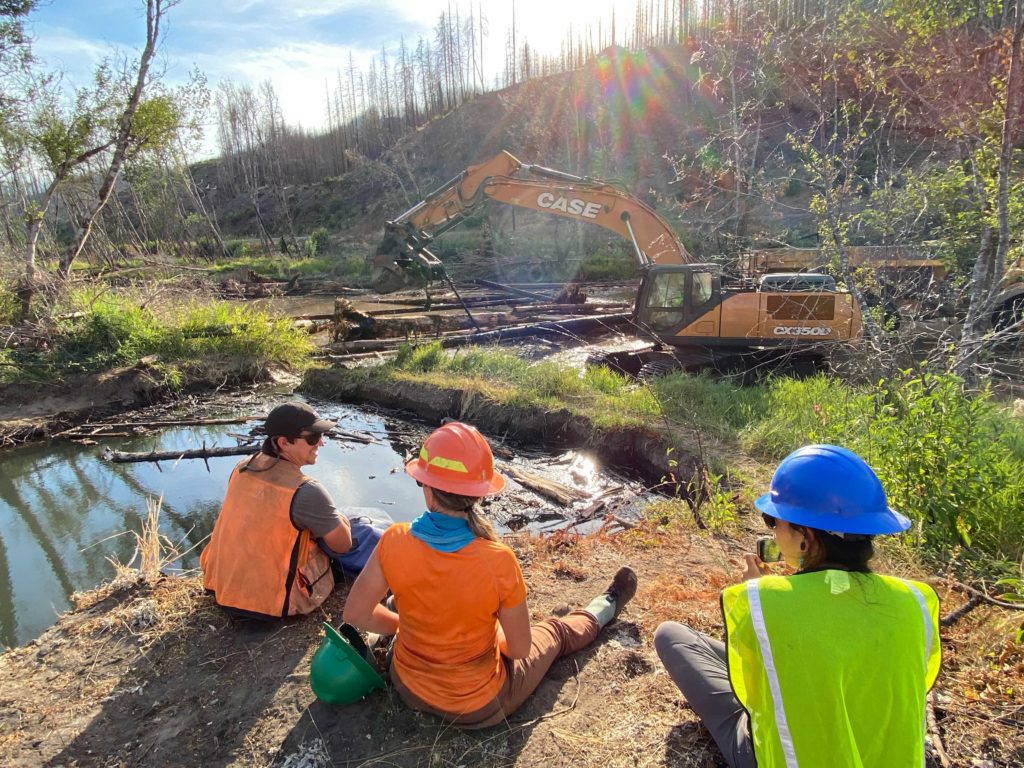
Throughout the pacific northwest, our rivers hold a dynamic legacy of pristine water, abundant salmon runs and breathtaking views. This summer, McKenzie River Trust staff, contractors, and project partners implemented a large-scale floodplain restoration project to nurture this northwest legacy, improving habitat for aquatic life and the salmon that travel annually to Finn Rock Reach to spawn.
Transforming 85 acres of riparian floodplain forest takes an incredible effort. Since 2017, McKenzie River Trust has worked with partners at the US Forest Service, McKenzie Watershed Council, and external contractors to plan, design, and engineer the project. Overall, the restoration project has more than doubled the number of flowing channels and wetlands in the site, improving habitat quality for spring Chinook salmon, bull trout, Pacific lamprey, rainbow and cutthroat trout, Western pond turtles, and many other species of fish and wildlife.

An aerial image of Finn Rock Reach shows burn severity from the Holiday Farm Fire in 2020.

Log placement in the project area creates habitat for salmon, trout, turtles, and more.
“The Finn Rock project is modeled after the floodplain restoration project recently completed on the South Fork McKenzie River, where we’ve seen huge increases in rearing and spawning habitat for. salmon, trout, and lamprey,” explained Kate Meyer, a Fisheries Biologist with the U.S. Forest Service. “The USFS is excited to partner with McKenzie River
Trust on this project as it complements completed work and planned future work to restore floodplain connectivity to the Middle McKenzie Valley and help recover Chinook and bull trout populations.”
Projects such as this also help to protect drinking water, especially after large scale fires, such as the Holiday Farm fire that burned through the area last September. According to Karl Morgenstern, the Watershed Restoration Program Manager for EWEB, “One of the main strategies
for buffering the impacts to drinking water quality from these large, burned landscapes is to implement floodplain restoration projects like the McKenzie River Trust is doing at Finn Rock Reach to allow the river to reconnect with its historic floodplain and spread- out the flow. This reduces river flow velocities that allows sediment to drop out while attenuating the increased levels of nutrients, metals and organic carbon that are being mobilized off the upstream burned landscape during storm events.”
Thank you to our Partners and Funders
This project was made possible by committed community partners and donors including the US Forest Service, the McKenzie Watershed Council, the Eugene Water & Electric Board, the Bureau of Land Management, the Oregon Department of Transportation, the Bonneville Power Administration, the Oregon Watershed Enhancement Board, BCI Contracting Inc, Wolf Water Resources, and the McKenzie Homewaters Campaign donors.
